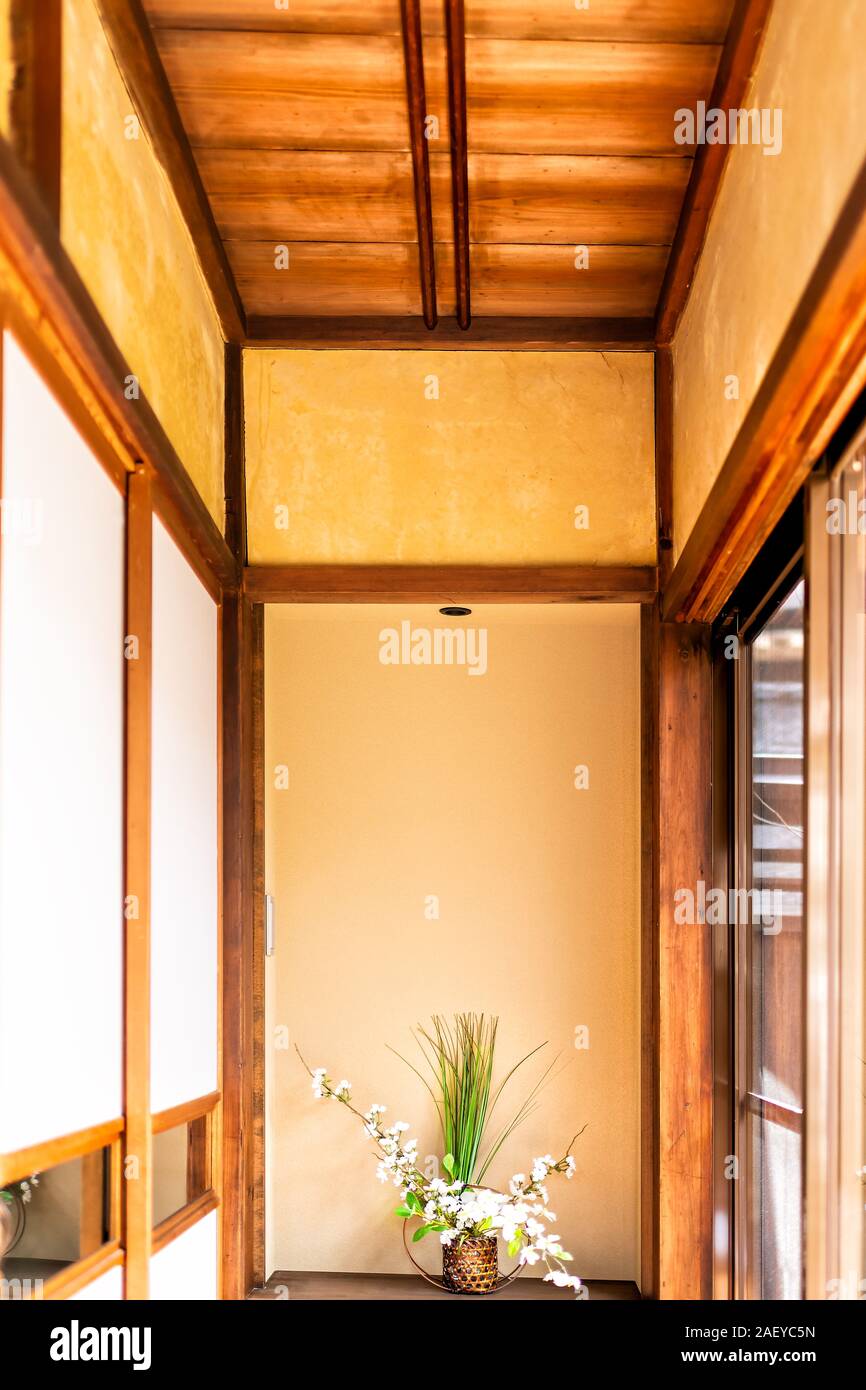
Whether you're planning a trip to Japan, or just looking for a fun place to spend a few days, a glass room might be just the thing for you. These rooms use beautiful glass to create a warm and comfortable environment, and are a unique experience for everyone.
Located in downtown Hiroshima, Japan, the Optical Glass House by Japanese architect Hiroshi Nakamura is a small glass facade cladduck on a busy intersection. The building features an 8.6 x 8.6 metre glass block facade which animates the street. The glass is supported by a steel frame reinforced concrete which was given an upward camber.
The Optical Glass House is designed to trick the eye with a nifty looking optical glass wall. The wall is composed of 6,000 glass masonry units that are 50mm wide. Each unit is threaded together using 75 metal dowels to guide them into rows. The total weight is 13 tons.
Designed by Tokujin Yoshioka, KOU-AN (Guang An) is an all glass tea house that brings a contemporary look to traditional Japanese architecture. The installation reflects natural light and highlights the evanescent nature of the sun. It also offers an opportunity to experience the essence of Japan.
KOU-AN is located in front of the historic Shoren-in temple in Kyoto. The installation's rainbow effect creates a rainbow of colors when the sunlight hits it. The building's transparent walls and roof allow the viewer to experience the constant change of reflections under natural light.
This project was initiated by Tokujin Yoshioka in 2011 as a way to show people the origins of Japanese culture. Tokujin said that he wanted to bring the beauty and purity of tea ceremony to a modern setting. Moreover, he hoped to inspire younger generations to learn about the tradition of Japanese tea ceremonies. He also explained that he was attempting to preserve the tradition.
Designed by Tokujin Yoshioka, KOU-AN Glass Tea House is a modern take on traditional Japanese culture. This transparent glass structure is a new take on the traditional tea house, which brings out the performance and use-full aspects of design. The slender steel frame supports the roof and the thick sheet of glass has a wavy surface.
This all-glass teahouse is installed beside an ancient Japanese temple. Tokujin is trying to revive tradition and remind people of the origins of Japanese culture. In addition to reinterpreting the traditional tea house, he wants viewers to consider the significance of the tea ceremony in today's society.
The concept for the glass teahouse began when Tokujin wanted to explore a new way to express the traditional Japanese teahouse. Rather than using flowers and elaborate ornamentation, he wanted to create a simple and modern tea house, which would reflect the fragility of the sun.
Located on a cliff overlooking the Pacific Ocean in Atami, Japan, the Water / Glass Guest House in Japan by Kengo Kuma is a guesthouse that combines glass and water. The structure of the guesthouse is transparent, providing guests with a view of the surrounding landscape.
The guesthouse is a three-story building constructed with a steel frame and glass panels. The roof of the guesthouse is supported by a solid iron column. The walls and floor of the house are made of glass and stainless steel support members. The interior features a glass corridor that connects the dinning room to the rest of the house. The rooms are also surrounded by large glass windows that bring the natural courtyard into the home.
Traditionally, Japanese houses have a variety of unique architectural features. These homes are primarily constructed of natural materials, such as wood, clay, and rice straw. They are built to last, and to reflect Japanese culture. They also respect the environment and attempt to work in harmony with it.
The genkan, also known as the entrance hall, is an important element in Japanese-style homes. This is usually a sunken area, lower than the rest of the building floor, and provides a spot for people to put on shoes before entering the main part of the house. It is also used to display ikebana flower arrangements and wall hangings.
Architects in Japan have embraced facade transparency in unique ways. The primary goal of this transparency is to allow air, light, and ventilation to flow into and out of the building. Usually, the transparency is in the form of a glass wall.
In fact, Japanese houses often feature outdoor living spaces. In addition, there are built-in storage areas and sliding interior walls that can be altered to suit different needs.
The New National Gallery in Berlin is a good example of a contemporary building that demonstrates the benefits of glass. The gallery features a transparent glass facade as a "temporal reflective screen," a design trick that makes it look as if a window has been pressed into the wall.

Immerse yourself in architecture’s most boundary-pushing ideas—where innovative home improvements meet visionary urban developments. Discover new building techniques, materials, and creative concepts that are redefining how we shape our spaces on a global scale.